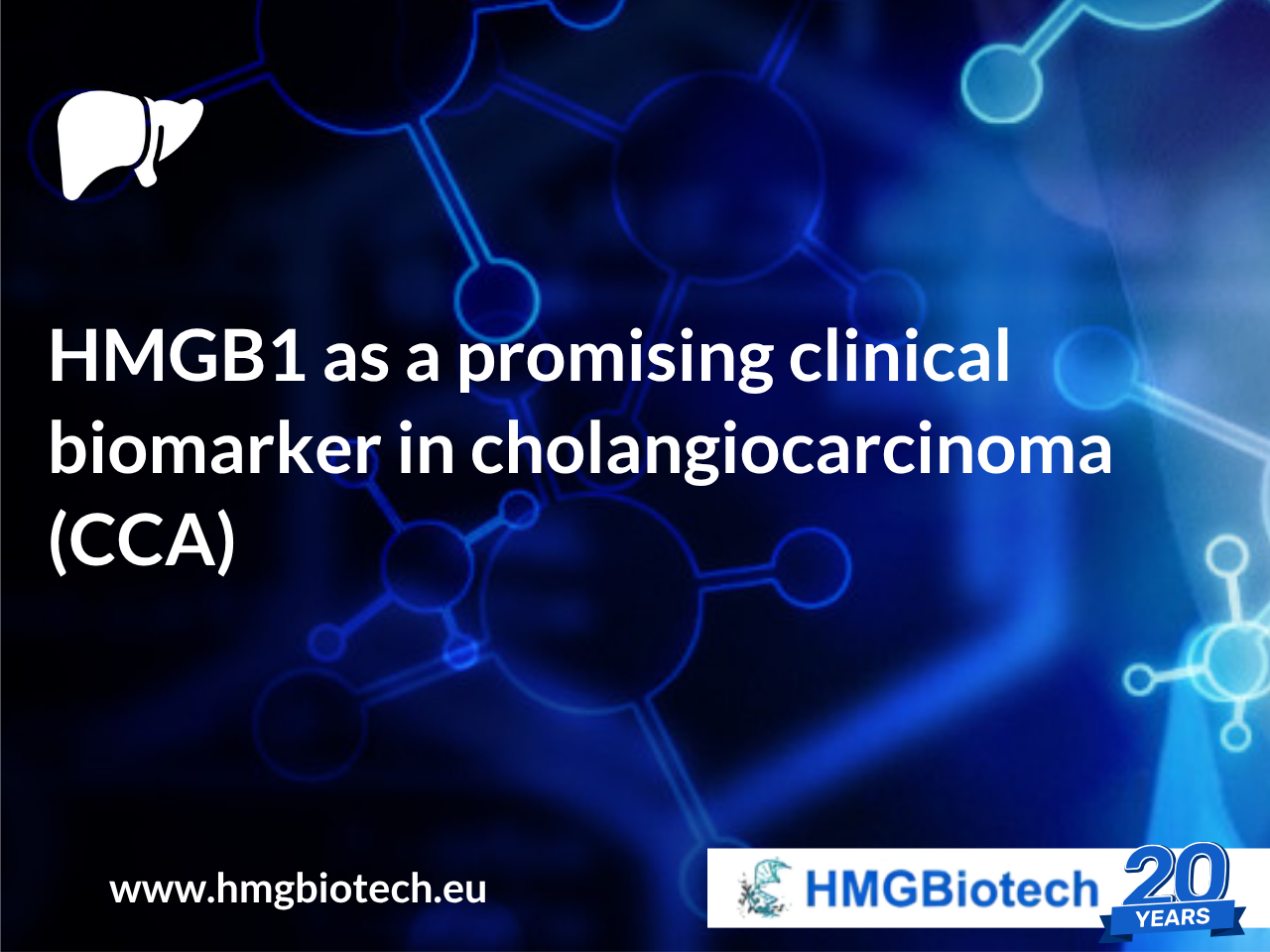Cholangiocarcinoma (CCA), a malignancy of the bile duct epithelium, remains a serious health burden. Given its poor prognosis and limited treatment options, there is a pressing need for reliable biomarkers to support early detection, stratification, and monitoring of disease progression.
High-Mobility Group Box 1 (HMGB1) protein has emerged as a candidate biomarker due to its dual role in maintaining nuclear homeostasis and acting as a damage-associated molecular pattern (DAMP) when released extracellularly. Elevated levels of extracellular HMGB1 are associated with inflammation, immune modulation, and tumor progression, making it a molecule of interest in cancer research, including hepatobiliary malignancies.
A recent study has provided new insights into HMGB1 expression patterns in CCA by integrating transcriptomic, immunohistochemical, and serological data:
- Transcriptomic analysis (GEPIA) revealed a significant increase in HMGB1 mRNA levels in CCA tissue compared to normal liver tissue, suggesting transcriptional upregulation during cholangiocarcinogenesis.
- Immunohistochemical analysis of tumor biopsies showed that HMGB1 is predominantly localized in the nucleus, consistent with its intracellular functions.
- Serum HMGB1 levels were elevated in over half the cases of the research. Importantly, higher HMGB1 concentrations in blood correlated with advanced tumor stages and elevated bilirubin levels—two clinical markers associated with disease burden and progression.
These findings underscore the potential utility of HMGB1 as a non-invasive biomarker in both tissue and blood for CCA. Its expression may not only reflect tumor presence but also serve as an indicator of metastatic potential and disease severity, offering a valuable tool for guiding clinical decisions.
At HMGBiotech Srl, we provide comprehensive information to facilitate informed decision-making for researches with HMGB1
Contact us for your pre-sales questions about HMGB1
Read the full article about the study



